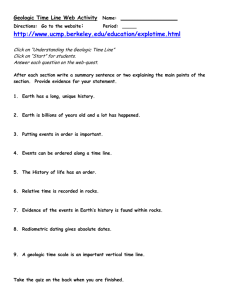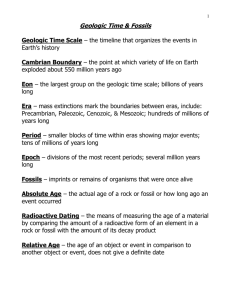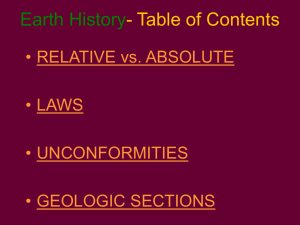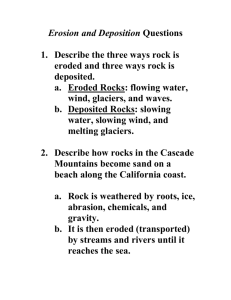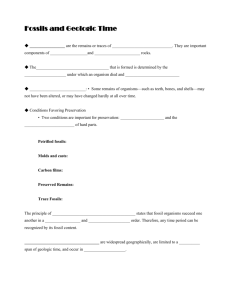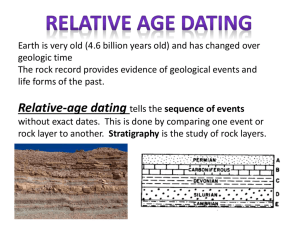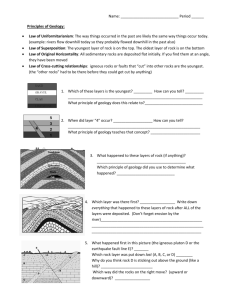Geologic History General Notes
advertisement
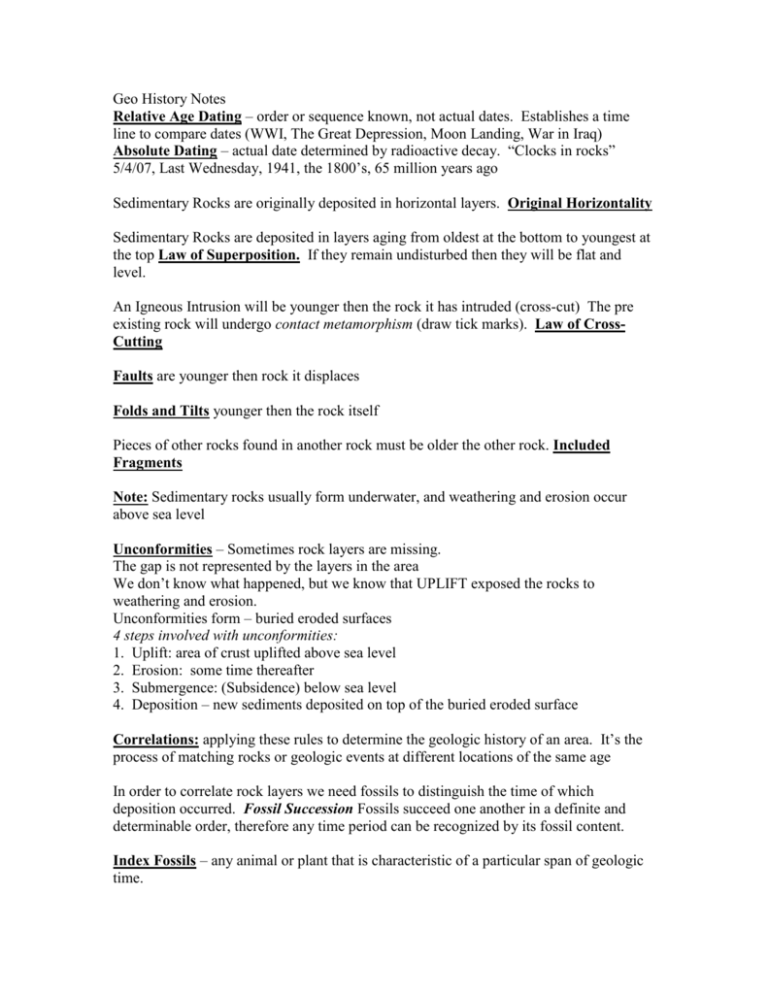
Geo History Notes Relative Age Dating – order or sequence known, not actual dates. Establishes a time line to compare dates (WWI, The Great Depression, Moon Landing, War in Iraq) Absolute Dating – actual date determined by radioactive decay. “Clocks in rocks” 5/4/07, Last Wednesday, 1941, the 1800’s, 65 million years ago Sedimentary Rocks are originally deposited in horizontal layers. Original Horizontality Sedimentary Rocks are deposited in layers aging from oldest at the bottom to youngest at the top Law of Superposition. If they remain undisturbed then they will be flat and level. An Igneous Intrusion will be younger then the rock it has intruded (cross-cut) The pre existing rock will undergo contact metamorphism (draw tick marks). Law of CrossCutting Faults are younger then rock it displaces Folds and Tilts younger then the rock itself Pieces of other rocks found in another rock must be older the other rock. Included Fragments Note: Sedimentary rocks usually form underwater, and weathering and erosion occur above sea level Unconformities – Sometimes rock layers are missing. The gap is not represented by the layers in the area We don’t know what happened, but we know that UPLIFT exposed the rocks to weathering and erosion. Unconformities form – buried eroded surfaces 4 steps involved with unconformities: 1. Uplift: area of crust uplifted above sea level 2. Erosion: some time thereafter 3. Submergence: (Subsidence) below sea level 4. Deposition – new sediments deposited on top of the buried eroded surface Correlations: applying these rules to determine the geologic history of an area. It’s the process of matching rocks or geologic events at different locations of the same age In order to correlate rock layers we need fossils to distinguish the time of which deposition occurred. Fossil Succession Fossils succeed one another in a definite and determinable order, therefore any time period can be recognized by its fossil content. Index Fossils – any animal or plant that is characteristic of a particular span of geologic time. In order to be considered an index fossil two critera must be met: 1. The life form live over a wide geographic area – horizontal distribution 2. Life form must have lived for a short period of time, no vertical distribution Volcanic Ash also used in correlations – large eruption – widely distributed but represents a small time interval

